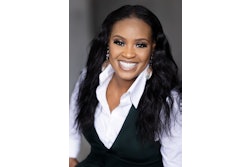 Emma White
Emma WhiteDifferent roads at times lead to the same castle. … That is very true, especially when it comes to diversity. Cultivating a culture of respect, caring and inclusion of differences among students helps reduce school-based risk factors for children from different backgrounds. It is good to give students an opportunity to identify prejudices as well as similarities and differences among each other with regard to celebrating diversity. It is true that cultural differences among students in most cases occasionally create challenges in the classroom, but when we start to celebrate the differences, it will automatically create an awesome environment.
In All of Us Multicultural policy for Victoria 2009, Hon John Brumby and James Merlino, MP, P.2., are quoted as saying:
“While respecting our differences is necessary in an open, inclusive and vibrant society, it is also vital to acknowledge that we have much in common. We have much to gain individually and collectively, by working together to build a positive and progressive future that enhances our state as a great place in which to live, work, invest and raise family.”
The traditional owners of the present State of Victoria in Australia were made up of 40 language groups with diverse traditions and cultures. Educators who are culturally competent, respect multiple culture ways of knowing, seeing and living, they celebrate the benefits of diversity and have an ability to understand and honor differences. Culture competence is much more than awareness of cultural differences; it is the ability to understand, communicate with and effectively interact with people across cultures. It encompasses:
- Being aware of one’s own world view.
- Developing a positive attitude toward cultural differences.
- Gaining knowledge of different cultural practices and world views.
- Developing skills for communication and interaction across cultures.
Christian, Jews, Muslims, Shaman, Zoroastrian, stone, ground, mountain, river, each has a secret way of being with the mystery, unique and not to be judged … so be it true with our diversity. In order to celebrate our diversity in education, the following are very important:
- Use inclusive language and appropriate modes of address.
- Positively interact with students.
- Actively discourage classroom incivilities.
- Encourage open, honest and respectful class discussion.
A culturally inclusive classroom is one where students and staff alike recognize, appreciate and capitalize on diversity so as to enrich the overall learning experience. Fostering a culturally inclusive learning environment encourages all individuals regardless of age, gender, ethnicity, religious affiliation, socioeconomic status, sexual orientation or political beliefs to develop personal contacts and effective intercultural skills.
It is time for parents and educators alike to teach young people early on in life that, in diversity, there is beauty and there is strength. With this in mind, the following questions, answered correctly and honestly by parents and educators toward their children, can help us in celebrating differences among students:
- What other knowledge, skills and resources would help me to teach from a more culturally inclusive perspective?
- What do I know about the cultural, linguistic, and religious and education background of my students and other staff?
- How could I learn more about the diversity of my students and staff colleagues?
- How do I respond to my students (emotionally, cognitively and behaviorally) based on these perceptions?
- What experience do I have as a result of living, studying or working in culturally and linguistically diverse cultures? How can I capitalize on these experiences?
- What is my definition of “diversity”?
- What are the national, cultural, linguistic or religious and educational backgrounds of my students and other staff?
- What are my perceptions/assumptions of students and staff colleagues from diverse cultural groups? Or with language and dialects different from mine? Or with special needs or requirements?
- How do I adapt my teaching practices to be more responsive to the unique needs of diverse student groups?
- What are the sources of these perceptions (e.g., friends/relatives, media, stereotypes, past perceptions)?
Let’s take our diversity to be 246 varieties of cheese. We love cheese; so should we celebrate and love our diversity. It is important to celebrate similarities as well as discover differences between students. (Refer to GIHE document … “Managing Intercultural Conflicts Productivity.”) This includes the following:
- Identify and prepare for potential conflicts before they arise.
- Establish a climate of trust, tolerance and mutual respect.
- Promote effective communication and listening skills.
- Manage emotions effectively.
- Brainstorm for group consensus.
- Act as a third party mediator.
If the entire points above are followed correctly, then we are on our way to celebrating differences among students … enjoying our diversity. It is good to develop cultural competence among students. Inclusive teaching is the key to celebrating our differences by promoting an inclusive and caring society through education.
Here is a video about how three young elementary children act out a simulated advertisement for Inclusive O’s, a great, multicolored cereal. The point being driven home is let us celebrate our diversity — everything is better together.
Emma White, an education enthusiast, works for Auvisa.org and is interested in writing about diversity in education.















